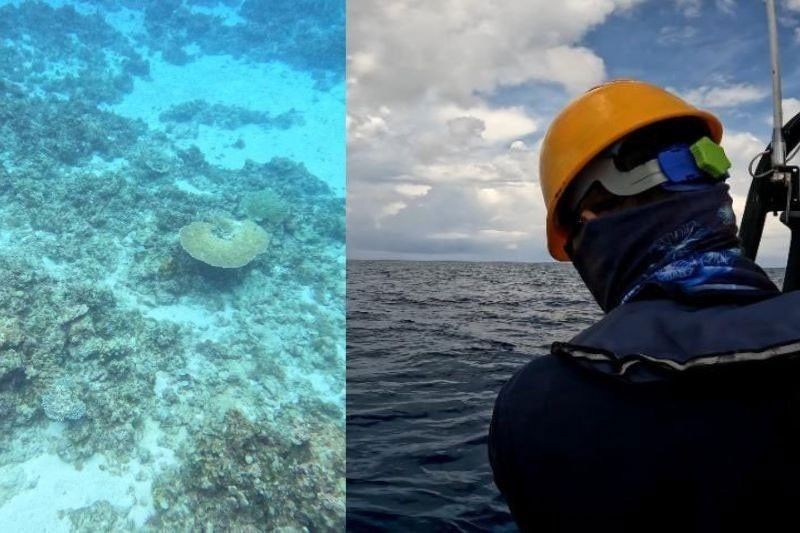Decline in fish output seen amid destruction of 21,000 acres of West Philippine Sea coral reefs

MANILA, Philippines — The country faces a decline in fisheries production amid a study conducted by the Center for Strategic and International Studies that China has destroyed at least 21,000 acres of coral reefs in the West Philippine Sea (WPS), an expert from the University of the Philippines-Marine Science Institute (UP-MSI) warned yesterday.
“The immediate effect of the destruction of coral reefs and the devastation of the habitats of fish is the decline in the production of our fish,” UP-MSI assistant professor Mike Atrigeneo said in a radio interview.
He explained that the worst case scenario could be the extinction of fish dependent on coral reefs.
“For lapu-lapu, maya-maya and other fish associated with live stones, these are the corals, they are facing extinction as they have no habitat. Many fish eat directly from the corals. If there are no longer corals, that’s the impact on fisheries, we have lower catch. That’s the economic implication,” Atrigeneo added.
He was reacting to the study conducted by the Center for Strategic and International Studies, which showed that China’s activities have caused massive damage to the marine environment in the WPS.
Another report – “Deep Blue Scars: Environmental Threats to the South China Sea” by Asia Maritime Transparency Initiative – has attributed the damage of coral reefs to Chinese activities such as dredging and landfills to build artificial islands, as well as clam harvesting.
According to Atrigeneo, the normal fish catch is pegged between 20 and 40 metric tons per square kilometer.
“You can only get 50 percent of the stocks, so around 20 metric tons per kilometer. You have to retain 50 percent so that the 50 percent will be able to replenish the stocks and there will be no overfishing,” he noted.
BFAR ship to remain in Panatag
A vessel of the Bureau of Fisheries and Aquatic Resources (BFAR) would remain in the area of Panatag Shoal despite a claim by China that it intruded in what it called was their territory.
The “persistent presence” of the BFAR ship BRP Datu Sanday was “consistent with the national laws and the Philippines’ position on the West Philippine Sea,” declared Philippine Coast Guard Commodore Jay Tarriela, spokesman on WPS concerns.
The BFAR vessel would “ensure the safety of Filipino fishermen in the area and safeguard them from further harassment,” he wrote on Twitter last Feb. 23.
It would also continue to carry out its duty of “distributing fuel subsidies to the Filipino fishing boats that are present in the area to support their prolonged fishing activities.”
He was responding to the Twitter post from People’s Daily, said to be the “largest newspaper in China,” saying the BFAR ship “insisted on intruding into waters adjacent to China’s Huangyan Island despite China’s repeated dissuasion and warnings.” Huangyan Island is China’s name for Panatag Shoal, also called Scarborough and Bajo de Masinloc.
It also claimed that it “took necessary measures to monitor and repel the vessel in accordance with the law.”
A spokesman for the China Coast Guard warned the Philippine government to “immediately stop the infringement and noting China reserves the right to take further actions.”
More joint Philippines-US patrols ahead
The Armed Forces of the Philippines (AFP) will have bigger and more frequent joint maritime patrols with the United States military in the WPS in the coming months.
AFP chief Gen. Romeo Brawner Jr. said such plans are already underway and will be carried out in partnership with the US Indo-Pacific Command (USINDOPACOM).
“We are going to do those activities more; we will increase the frequency and its range,” he told delegates of the US National Defense University Capstone Pacific program who visited Camp Aguinaldo yesterday.
The AFP has already conducted three Maritime Cooperative Activities in the WPS over the past few months using US naval and air assets, working hand-in-hand with the Philippine Navy and the Philippine Air Force.
“Admiral John Aquilino, commander of USINDOPACOM, committed to increase these engagements and told me that he’s ready when we are ready,” Brawner said.
The AFP chief welcomed the delegates composed of US military generals and flag officers led by retired Gen. John Kelly, a former White House chief of staff, Secretary of the Department of Homeland Security and commander of the US Southern Command.
Capstone is a five-week course for newly selected generals and flag officers that will equip them with a comprehensive understanding of joint doctrine and the principles of the “Joint Operational Art.”
Defense Secretary Gilberto Teodoro Jr. also met with the Capstone delegates and shared how the Philippines is strengthening itself and forging stronger alliances with other nations like the US. — Ghio Ong, Michael Punongbayan
- Latest
- Trending




























